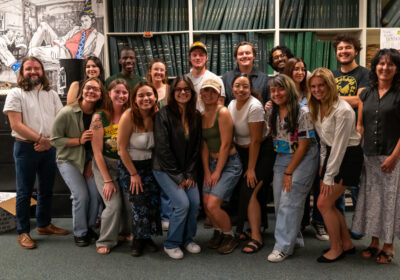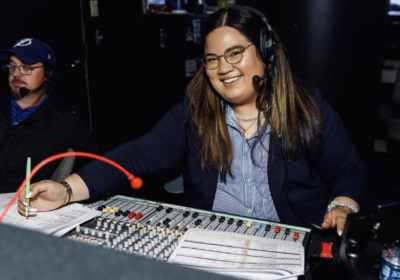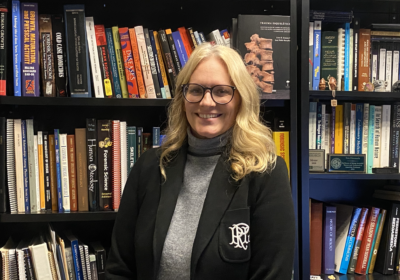Behind the looking glass

In the world of performing arts, several unknown hands are influential in shaping the future of a production before audiences lay their eyes on the finished subject.
The Tampa City Ballet production of Alice in Wonderland finished its run at USF Theatre I Sunday to crowds and smiling faces. Nathalie Adams, 14, played Alice and shared some of her experiences with preparing for and playing a lead role.
“I watched all the videos of production companies such as Royal Ballet and then I took some of the acting and steps from there and put it into my body,” Adams said. “I tried to bring out my personality while I was dancing and doing the role of Alice.”
Adams said her time in pre-production was hard work, with a rehearsal period of two months. She said her time with America’s Ballet School gave her a solid foundation with the fundamentals in dance. Several of the performers were children, some as young as 3.
According to USF faculty member and the play’s Artistic Director Paula Nunez, Alice in Wonderland required a larger budget than other productions she oversees. She estimated the budget was roughly $25,000 with all the costs included.
“This is the second time we’ve produced this Alice in Wonderland,” Nunez said. “So it was easier for us because we had a lot of the production already.”
This production was not a one-off event, there has been a steady production cycle of different ballets through the years at USF hosted by the organizers of this production.
“We did it four years ago, but I think it’s a production that we wanted to maintain,” Nunez said. “This thing, The Nutcracker and Sleeping Beauty, so we’re going to try and do it at least every three years so we can maintain the costumes and all the work that is done live.”
Nunez said the funds were raised by volunteers around the Tampa Bay Area. The volunteers may contribute monetarily or through assistance within the production itself.
“We have volunteers — they are designers, they are fashion designers, they sew,” Nunez said. “So we do everything that you see … it’s made, it’s painted by hand. Like the flowers, all of that is designed and painted. A lot of them are hard work, just putting all the paint and everything together.”
Nunez said the team of designers and technicians work together for the sake of the community and for the children they work with in order to bring a piece of culture to Tampa. She said that community is one of the driving forces of the production.
“We feel, in this school, we are part of the community,” Nunez said.
Alice in Wonderland is hard to produce, according to Nunez, because of the number of props, cues and set pieces stagehands have to change and keep track of.
Sadie Lehmker, the person in charge of the organized chaos of production night, is a USF staff member and the theater’s stage manager. She said getting past the dry-runs of the show without actors on stage and the full production was on a tight schedule.
“We started loading in (Saturday) at 10 a.m., finished loading about one and then we started our tech-cueing run about 1:30. That went until about 5:30, and then the show was at 7,” Lehmker said.
Cue-to-cue is the process in which the staff backstage work from each cue to make sure that the timings for lights and other things sync up with the actors. A cue-to-cue is generally an arduous process that can’t cover everything. Indeed, the only issue that Lehmker addressed as noteworthy was the timings involved.
“Last night’s run, since we only had one run of the second act during the cue-to-cue, we were able to squeeze two runs of act one in … during the run last night I was like, ‘Oh, I need a blackout’ but there wasn’t a blackout so then it was just awkward,” Lehmker said. “Today there actually was a blackout, so each time you do it you are able to see things and then you’re able to tweak it for the next show.
“It’s always…different. No matter how much you practice there’s always something new that happens because they get onstage and they become someone else.”







